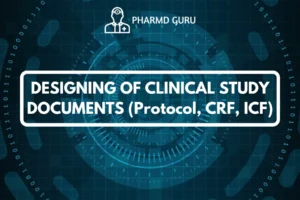The Abbreviated New Drug Application (ANDA) is a crucial regulatory pathway in the pharmaceutical industry for the approval of generic drugs. It allows manufacturers to demonstrate that their generic version of a previously approved reference drug is bioequivalent and therapeutically equivalent to the original product. This article provides an introduction to ANDA and highlights the requirements for successfully submitting an ANDA to the regulatory authorities.
SCROLL DOWN TO THE BOTTOM OF THE PAGE FOR ACTUAL NOTES
TABLE OF CONTENTS:
- Introduction to Abbreviated New Drug Application (ANDA)
- Requirements for Submitting an ANDA
- Bioequivalence Studies
- Active Pharmaceutical Ingredient (API) Information
- Manufacturing and Quality Control
- Labeling and Product Packaging
- Patent Certification and Exclusivity
- Drug Master File (DMF)
Introduction to Abbreviated New Drug Application (ANDA):
An Abbreviated New Drug Application (ANDA) is a submission made by a generic drug manufacturer to the regulatory authorities, such as the United States Food and Drug Administration (FDA), seeking approval to market and distribute a generic version of a previously approved reference drug. The reference drug, also known as the innovator or brand-name drug, has already undergone extensive testing and has an established safety and efficacy profile.
The purpose of the ANDA is to demonstrate that the generic drug is bioequivalent and therapeutically equivalent to the reference drug, meaning it contains the same active ingredient(s), dosage form, strength, route of administration, and has the same intended use. The ANDA pathway allows for a streamlined approval process since the generic drug relies on the safety and efficacy data already established by the reference drug.
Requirements for Submitting an ANDA:
To successfully submit an ANDA, generic drug manufacturers must fulfill several requirements set forth by the regulatory authorities. These requirements ensure that the generic drug meets the necessary quality, safety, and efficacy standards. The key requirements for submitting an ANDA include:
1. Bioequivalence Studies:
Generic drug manufacturers are required to conduct bioequivalence studies to demonstrate that their product is bioequivalent to the reference drug. Bioequivalence studies compare the rate and extent of absorption of the generic drug with that of the reference drug, ensuring that there are no significant differences in the pharmacokinetic profile. These studies typically involve testing in healthy human volunteers.
2. Active Pharmaceutical Ingredient (API) Information:
The ANDA must provide detailed information about the active pharmaceutical ingredient(s) (API) used in the generic drug formulation. This includes the characterization, specifications, and quality control measures for the API. The regulatory authorities evaluate this information to ensure the quality and consistency of the API.
3. Manufacturing and Quality Control:
Generic drug manufacturers must demonstrate that their manufacturing processes and facilities meet the necessary standards for producing safe and effective drugs. This includes providing detailed information on manufacturing procedures, quality control systems, and validation of manufacturing processes. The regulatory authorities review this information to ensure compliance with Good Manufacturing Practices (GMP).
4. Labeling and Product Packaging:
The ANDA submission should include proposed labeling and product packaging for the generic drug. The labeling should accurately reflect the drug’s indications, dosage instructions, warnings, and precautions. The product packaging should meet the necessary requirements for ensuring product integrity, stability, and tamper-evident features.
5. Patent Certification and Exclusivity:
Generic drug manufacturers are required to make certain certifications regarding patents and exclusivity of the reference drug. This includes stating whether there are any patents listed for the reference drug and whether the generic manufacturer seeks to market the generic drug before the expiration of any relevant patents or exclusivities. Patent certifications play a crucial role in determining the timing of generic drug market entry.
6. Drug Master File (DMF):
In some cases, generic drug manufacturers may need to reference a Drug Master File (DMF) for certain components of the generic drug formulation. A DMF is a confidential document submitted to the regulatory authorities that contains detailed information about the manufacturing, composition, and quality of a drug substance or drug product. The use of a DMF allows generic drug manufacturers to reference the information contained in the DMF without disclosing its contents.
ACTUAL NOTES




